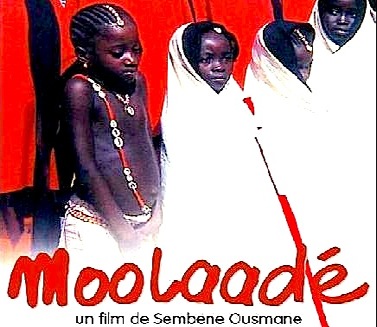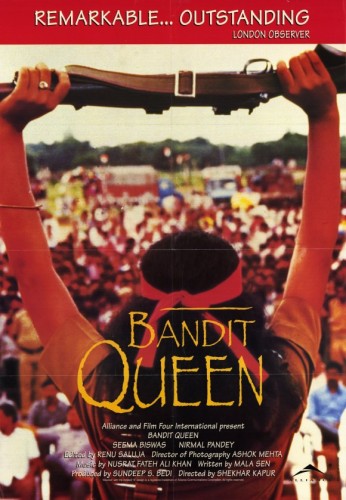“Geographical morality by which the duties of men… are not to be governed by… their relations to men, but by climates, degrees of longitude and latitude… As if, when you have crossed the equinoctial line, all the virtues die.” – Edmund Burke
The 18th century Irish politician Edmund Burke coined the term “geographical morality” to slam Britain’s Governor General of India, Warren Hastings, for excusing his own corruption by claiming it met Indian cultural norms. Burke fought a 10-year campaign to hold Hastings accountable for the colonial exploitation of India, under the belief that “there is no action which would pass for an act of extortion and of oppression in England, that is not an act of extortion and oppression in Europe, Asia, Africa and all the world over.” Such criticism of geographical morality challenges ideas of cultural relativism. Yet, it was Burke who debunked his peers’ assumptions about the Oriental barbarism of the Koran, by an extensive study that demonstrated that it could serve as a culturally appropriate guarantor of civil rights. He aimed to oppose geographical morality through the defense of personal liberty worldwide, while respecting established cultures rather than imposing foreign norms.
[youtube_sc url=”https://www.youtube.com/watch?v=NROlfuV5HJ4″]
“When writers, painters, musicians and filmmakers suspend their judgment and blindly yoke their art to the service of the nation, it’s time for all of us to sit up and worry.” – Arundhati Roy
One major risk of the defensive patriotism of colonized nations, is that it censors internal critics in the name of patriotic solidarity. 2004’s Moolaadé was the final film of Ousmane Sembene, the “Father of African cinema,” who died in 2007. Sembene was an artist never intimidated by controversy, nor did his patriotism lead him to self-censorship. His 1975 film, Xala, confronted institutional corruption in his native Senegal. 1977’s Ceddo was controversially frank about sectarian conflict between Muslims, Christians, and traditional spirituality. His vision in Moolaadé is a culturally specific condemnation of West African practices of female genital mutilation (FGM), but also a universally relevant exploration of cultural inertia and the personal cost of change. Surely, no reader of Bitch Flicks needs to be told that the forced mutilation of a girl’s genitals is wrong. However, if we cannot see that this struggle goes on, in another form, in our own cultures, then we are lost in the imaginary superiority of geographical morality. Here in Ireland, we know that international outcry is vital to force decriminalization of abortion, yet it remains intensely uncomfortable to feel one’s own culture reduced to an inferior evil in a foreign onlooker’s rhetoric. But the Irish have long cited American gun laws, use of the death penalty and armed police force, to define and defend our own imaginary cultural superiority. Unlike most things, injustice appears bigger when it is further away.

“By making films, we have the opportunity to view ourselves, for the first time, through a mirror made by ourselves.” – Ousmane Sembene
In a conservative, rural community that practices polygamy as well as the “purification” of FGM, Moolaadé opens with four girls fleeing the ceremony and seeking refuge with Mother Collé, who already resisted pressure to have her own daughter, Amsatou, cut. Collé does not defend the girls in the name of international human rights, nor in the name of the African Charter for Human Rights (the Banjul Charter), nor even in the name of existing laws prohibiting FGM in Burkina Faso, where Moolaadé is set. She defends them in the name of her village’s established cultural tradition of a protective spirit that can be evoked: the moolaadé. By wielding moolaadé to create a magical boundary around her compound, Collé declares herself, like Sembene, an equal inheritor of her own culture. Collé’s compound becomes a refuge, whose boundary rope even female goats can cross to escape rutting males. To force her to undo her spell, the village authorities are driven to whip Collé as “sacrificial lamb” on behalf of her community’s women, provoking the film’s climactic showdown.
As we try to unthink centuries of colonial ideology and develop respect for the self-determination of other societies, we never forget that the right to self-determination belongs not only to cultures, but to individuals and marginalized groups within those cultures. As the outsider, Mercenaire, is sacrificed for opposing violence against women in Moolaadé, we must ask how his freedom of conscience, or the self-determination of Collé’s girls, can be defended, if the authority of village elders is upheld? A White Savior’s approach would speak on behalf of its “saved,” just as the village elders seek to. The solution to Sembene’s “little tyrant” is the same as to White Saviors: amplifying the power of women and minorities to advocate for themselves. Defensive patriotism, that provokes the village men to oppose foreign contamination by destroying their radios, may be justifiably provoked by colonial stigma. In Ireland historically, and in Poland more recently, the disproportionate power of Catholic dogma stemmed from the Church’s role in resisting foreign oppression (British or Soviet), associating our patriotism with obedience to the social rulings of a celibate, exclusively male hierarchy. But culture is not a static concept that can be defended. It is a dynamic, living process of interpretation, and Collé Ardo’s conflict with the village elders strikes to its heart: who is empowered to interpret?

“Indeed, culture may be the missing link in the development of Africa. Culture is dynamic and evolves over time, consciously discarding retrogressive traditions, like female genital mutilation (FGM), and embracing aspects that are good and useful.” – Dr. Wangari Maathai
Poised between the imported influences of Islam and the radio, the village debates what the men consider “a minor domestic issue” and Collé brands “a matter of life and death.” She bears the scars of a life-threatening Caesarean, forced by complications from her own cutting and stitching. A sister of one of the fleeing girls died from this procedure. As Amsatou’s prestigious fiancé is pressured to reject her because she is a bilakoro (uncut), we witness the fearful prospect of a daughter’s becoming unmarriageable and unprotected, which has inspired loving mothers down the ages to enforce the cutting of their daughters. Yet, as girls kill themselves rather than be cut, and yet another dies from the procedure, Sembene questions whether it is worth torturing and risking lives for the sake of marriage value. In the face of cultural inertia and the threat of becoming outcast, it is still society that must be somehow changed, not the bilakoro.
Somali supermodel Iman, whose parents, like Sembene’s fictional Collé, withstood cultural pressure to subject her to FGM, has spoken against the practice, while Somali supermodel and Bond girl Waris Dirie, who was traumatized by FGM at age five before fleeing forced marriage at thirteen, was appointed a UN Special Ambassador in the struggle against it. It is no coincidence that both are supermodels. Only truly extraordinary genetic perfection grants African women their global visibility.

“Genital mutilation is not my thing… Listen, girls cannot go to school. I can’t tackle all the issues, otherwise I’m spreading myself too thin.” – Iman
Iman recently protested attempts to solicit her opinion yet again on FGM, in an interview focussed on her advocacy of education for girls. To question her priorities is to miss the point. There is a reason why Iman is expected to serve as the sole spokeswoman for, among other things, Somalia (any aspect thereof), the economic development of Africa (the entire continent), female education in Africa, female genital mutilation, and Black beauty. That reason is the widespread silencing and invisibility of African women’s perspectives in global culture. There is also a reason why so many young African girls have their genitals forcibly cut. By astonishing coincidence, that reason is also the widespread silencing and invisibility of African women’s perspectives in global culture. Waris Dirie is tackling FGM with her NGO, Desert Flower Foundation. But Iman also tackles the root causes of FGM, by addressing the neglect of girls’ education. Where Desert Flower Foundation understandably resorts to White Savior rhetoric in its pressing need for funds – “save a little Desert Flower!” – Iman tackles root causes of FGM, simply by existing as an assertive, outspoken and glamorously uncut African woman in the public eye, let alone by her packed schedule of activism. Conversely, when we accept the glaring absence of African women and their stories from our global culture (the legal struggles of Beatrice Mtetwa? The ongoing attacks against human rights defender Aminatou Haidar?) we are actively contributing to the root causes of FGM, by lowering the status of African women. Acknowledging that complicity feels less comfortable than the warm glow of donating to fight a foreign evil.

“If a white man or woman saw a white child that is mutilated, there would be screaming. I guarantee it would end. This is abuse against a child, so to say it’s to do with your religion or race, it’s all wrong. This is about child protection,” – Waris Dirie
The wording of the Banjul Charter‘s Article 18 states, “the State shall have the duty to assist the family, which is the custodian of morals and traditional values recognized by the community… The State shall ensure the elimination of every discrimination against women.” The Irish Constitution has similar wording about the State’s duty to “protect” (read: enforce) family, used to prohibit divorce until 1996, to criminalize homosexuality until 1993, to coerce unmarried mothers into surrendering their children for adoption and to bar married women from the civil service. If family organization has been traditionally patriarchal, how can the upholding of its “morals and traditional values” avoid discrimination against women? Yet, the Banjul Charter’s Article 18 also explicitly forbids discrimination against women, allowing its interpretation as a tool of liberation: who will be empowered to interpret? Similarly, the Koran forbids compulsion in religion, but contains verses justifying battle against “infidels” (composed when Mohammed’s followers were actively persecuted by nonbelieving Arabs). It can be read as advocating women’s equality – “any of you who labors in My way, be it man or woman; each of you is equal to the other (3:195)” – but contains verses that support gender discrimination. The Koran even supports queer-positive readings. As Burke claimed, the Koran can be interpreted as a basis for liberation and just rule: but who is empowered to interpret? At the joyous climax of Moolaadé, Amsatou’s fiancé, heir to the village’s throne, unites with the village women to collectively withstand traditional authority and reject genital mutilation. They empower themselves to interpret.
“We were taught at school, or even in tales and legends, that the hero was the soldier. It’s the leader, the one who can kill, who comes back as a hero. However, to me, from a moral point of view, it takes much more honesty and courage to resist the everyday without getting tainted by it.” – Ousmane Sembene. R.I.P.
[youtube_sc url=”https://www.youtube.com/watch?v=6GCOmlTewSo”]
_________________________________________
Brigit McCone has been fangirling over Wangari Maathai since her Lion King post, writes and directs short films and radio dramas. Her hobbies include doodling and terrible dancing in the privacy of her own home.








